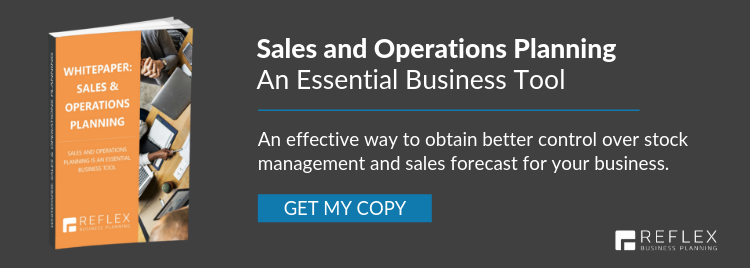Production scheduling is a core component of every manufacturing process. But for production scheduling to deliver its full potential, it must be continuously optimised. That means that manufacturers should implement the appropriate software systems that aim to make improvements to every stage of production scheduling.
What’s The Purpose Of Production Scheduling?
The ability to plan or schedule production is closely linked to manufacturing efficiency, since data monitoring and planning allows for timely adjustments that can reduce waste and make better use of human and material resources.
Efficient production scheduling can support sustainable business growth, since it allows manufacturers to make the best possible allocation of resources and processes during company scaling or in changing scenarios.
This will become clearer as we examine the different stages involved in production planning and how they contribute to overall efficiency and productivity.
The stages of production scheduling
1) Planning
The first stage involves accounting for all the elements that you will need to produce your goods. This includes staff, raw materials, equipment, and specific processes. A common pitfall is to view these elements as separate from each other, listing them on Excel spreadsheets as if they were mere inventory. For improved efficiency, you need to have a clear understanding of all elements that are interconnected.
2) Routing
Once you know how all the pieces fit together, the next stage is defining a manufacturing route. This means specifying how materials and components will move along the manufacturing process. To make routing more efficient, you need to incorporate a global perspective that allows you to know where every item is at all times and where it needs to go next. It’s also useful to use systems or tools that make this information available to everyone involved in the process.
3) Scheduling
The objective of scheduling is to create timetables that guarantee demand can be met with the parameters established during planning. Depending on the complexity of your operations, there may be different schedules in place at the same time but at different level. For example, you could have a master production schedule alongside more specific sub-schedules that target processes like assembly or quality control.
To optimise this stage, you should consider more than one manufacturing route so goods can be produced as per schedule if there are unexpected changes along the way. Software that incorporates statistical forecasting methods can come in handy.
4) Dispatch
In the dispatch stage, tasks are assigned (usually ad-hoc) in order to keep the production queue moving. Dispatch decisions can modify the directions outlined in the planning stage, as they have an immediate focus as opposed to the future-oriented nature of planning.
To improve dispatching, you must have access to real-time data and have an alert system in place that notifies you of any deviations from the forecast.
5) Execution
The final stage involves the fulfilment of all processes needed to meet production deadlines and objectives. Optimising execution requires the smooth coordination of management and production teams, as well as access to reliable information, suitable tools, and a skilled workforce.
Unified Forecasting And Production Planning
Unified forecasting software can greatly simplify the process of production scheduling through every stage. The software developed by Reflex Planning can help anticipate demand, spot process inefficiencies, and give you the information needed to make adjustments for optimal production. Get in touch to arrange a free product demo.

Image source: Unsplash
